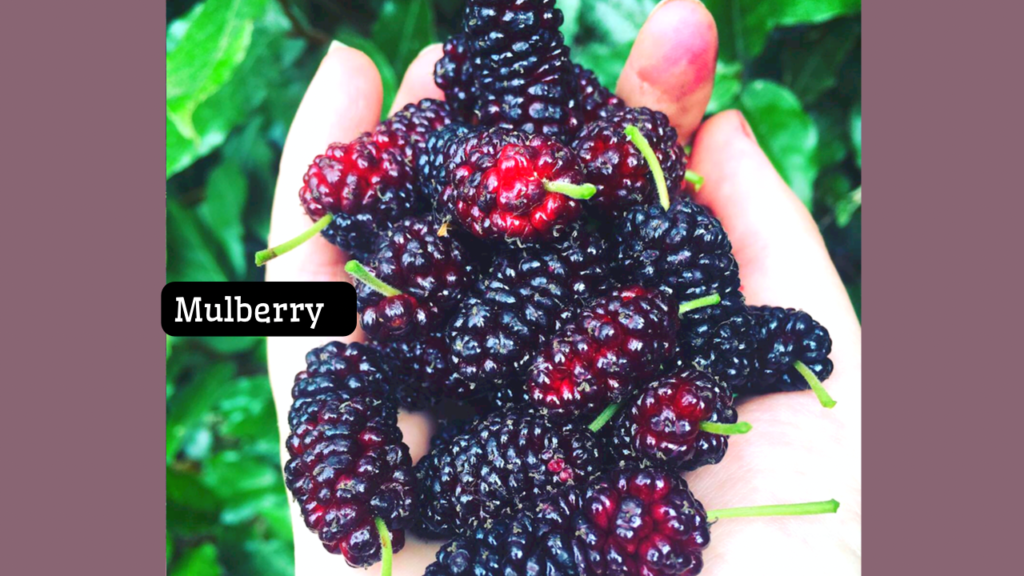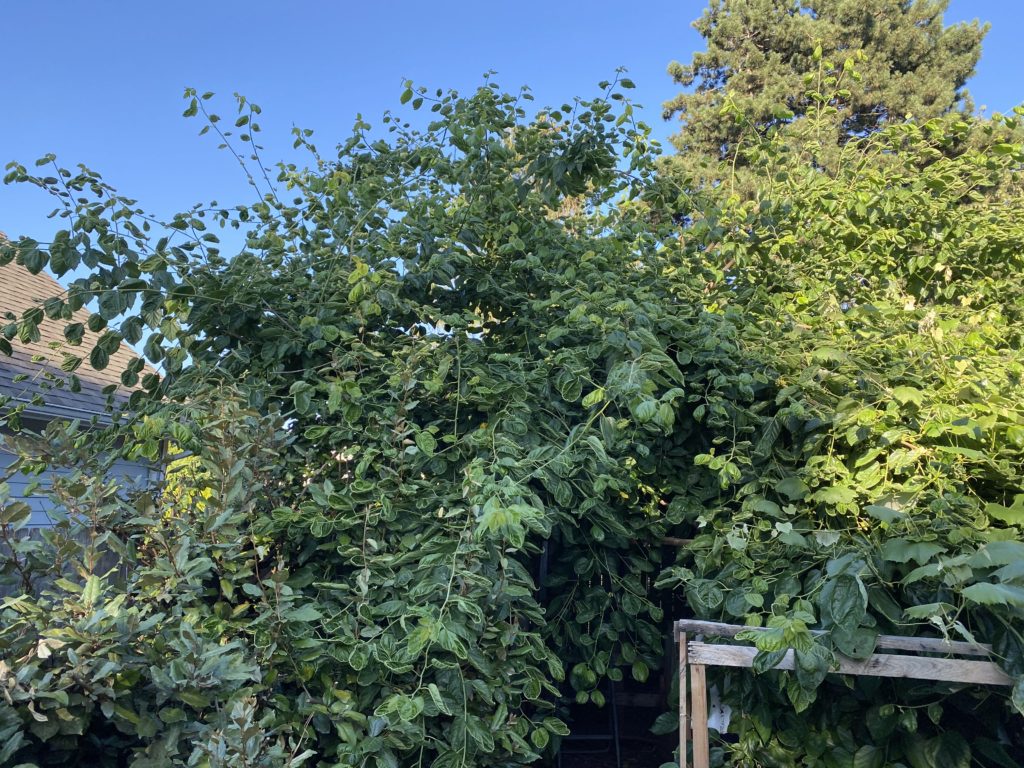Diversifying Our Berry Harvests with Mulberries

A Hard Year For Fruit Growers
2022 thus far has proven to be a difficult year for fruit growers in my part of of the world. Coming out of multiple years of drought, we started off the year with record cold snaps. We had a freak 3 inches of snow after our last frost date. In fact, the snow hit so late that stone fruit were already blooming in the Pacific Northwest. Frozen blossoms are nothing short of a disaster for orchardists. Many gardeners liked me had to face the harsh reality of a year with no cherries, no peaches, and few plums. Even early apples and breba figs yields have been hit.
On top of the freeze, a cold rainy spring kept pollinators hunkered down. And heavy rains created unusually high fungal pressure. Blueberry crops have disappointed many, since they bloomed while temperatures were too cool or the weather too rainy for bees to be out foraging. Decade-old raspberry patches have root rot for the first time ever. Even my blackcap raspberries – a reliable crop with consistently large yields – had poor pollination.
A Resilient Berry in Hard Times
While the weather has absolutely crushed many harvests in my garden this year, all is not lost. In fact, one of the reason I grow a huge diversity of fruits is so that if one – or 6 – crops fail, I have many others that are likely to produce well for me. Building diversity into our systems increases our resilience. And one such insurance policy that has yielded fantastically for me over the years it the mulberry.
Mulberries (Morus rubra, Morus alba, or Morus alba x rubra), are a genus of trees known for their production of deep reddish-purple fruits that are reminiscient of blackberries (Rubus genus). (White mulberries are, obviously, white or pale pink). The fruit is delightfully sweet, and lacks the acidity of blackberries.
These beautiful trees produce profusely, with berries ripening over several weeks to months. This results in a reliable daily harvest for long periods of time. I pick for a f ew minutes daily, and quickly fill multiple gallon containers in the freezer, with lots leftover for fresh eating each day. In July, dessert in the evening often looks like a handful of mulberries straight off the tree.
(Note, unlike blackberries and raspberries, the stem of the mulberry runs the whole length of the inside of the fruit. It’s totally edible! You can eat it, or not. Your choice, but the fruit is melded to the stem at its core and the stem cannot be removed.)
For me, growing mulberries has been a critically important part of our resilient design. When other berries fail, no matter the weird weather, my 3 mulberry trees produce reliably. There is plenty to share with wildlife (and my poultry – ducks love mulberries). When we build diversity into our permaculture systems, we create insurance policies for ourselves. My mulberries are my berry insurance policy: when more fiddly and delicate fruits fail, I can count on mulberries to give me a yield.

Tips for Growing Mulberries
- In my temperate climate, both red (M. rubra) and white (M. alba) grow well, but in many places white mulberries are an invasive species, spreading vigorously and displacing native trees and shrubs. Check before you plant, or consider only red mulberry species.
- Fruit size, color and quality vary considerably across varieties, but all are sweet and good eating. My Contorted Mulberry produces rather small fruit in moderate quantities, but my Illinois Everbearing is a workhorse: cranking out huge quantities of good-sized fruit for weeks on end. The Pakistani mulberry produces elongated fruits prized for their unusual length, but can be a bit less cold tolerant, so I chose not to grow it here.
- Consider that birds will love your mulberries, too. I count on 20% of my harvest going to wildlife and plan accordingly when it comes to pruning.
- More cold hardy varieties can be grown in zones 5 and 6-8, with less tolerant varieties 7-9 (In cold snaps, the trees can get die-back, particularly in areas pruned during the previous year.)
- Trees range from 6-20 meters (20-60+ft) at maturity, depending on species and variety. Choose carefully I don’t care what the catalogs tell you, mulberries are fast-growing, vigorous trees, and mine needs diligent pruning (pollarding) to keep it an appropriate size for my garden (see video above for more info).
- Mulberries like a sunny spot, and can tolerate a wide range of soil conditions. Once established, they are extremely drought tolerant. I never water my mulberry trees.

Site-Specific Design
One of the beautiful things about permaculture design is that it is site-specific. This means you tailor your design to your needs, your yard, your community. Mulberries are not the right choice for every garden design. As I mentioned earlier, the trees can get quite large. If I were not committed to yearly pollarding, Illinois Everybearing would not have been an appropriate tree for my yard.
Mulberry juice stains. Everything. Hands, clothes, concrete, roof tiles. When deciding if this tree is right for your design, plan accordingly. Don’t plant over a driveway, for instance. I pick berries wearing dark-colored clothes so they aren’t ruined by any falling fruit or the juice that gets all over my hands.
In permaculture we design with stacking functions in mind. This concept means we try to have every element in our garden do as many “jobs” as possible. We looke for the connections in different elements in our system to increase resilience. In order to address the issue of stainy, fallen fruit, prevent fruit flies, and keep the area under the tree tidier, I planted my largest mulberry in my poultry run. Ducks and chickens relish mulberry fruit and quickly clean up every fruit that hits the ground. So my mulberry tree feeds not only our family, but also provides weeks of snacks for the poultry with zero effort on my part. And it stacks another function in nicely: The birds enjoy the shade the tree provides as it effectively cools the chicken run in summer.
When planning your permaculture system or homestead, perhaps a mulberry might be a tree worth planting. Understanding the pluses and minuses of this tree, how would it work into your design to increase your food security when other crops might fail? Consider the mulberry, a tree that has served our family well and is a crucial component of my resilient garden design.
